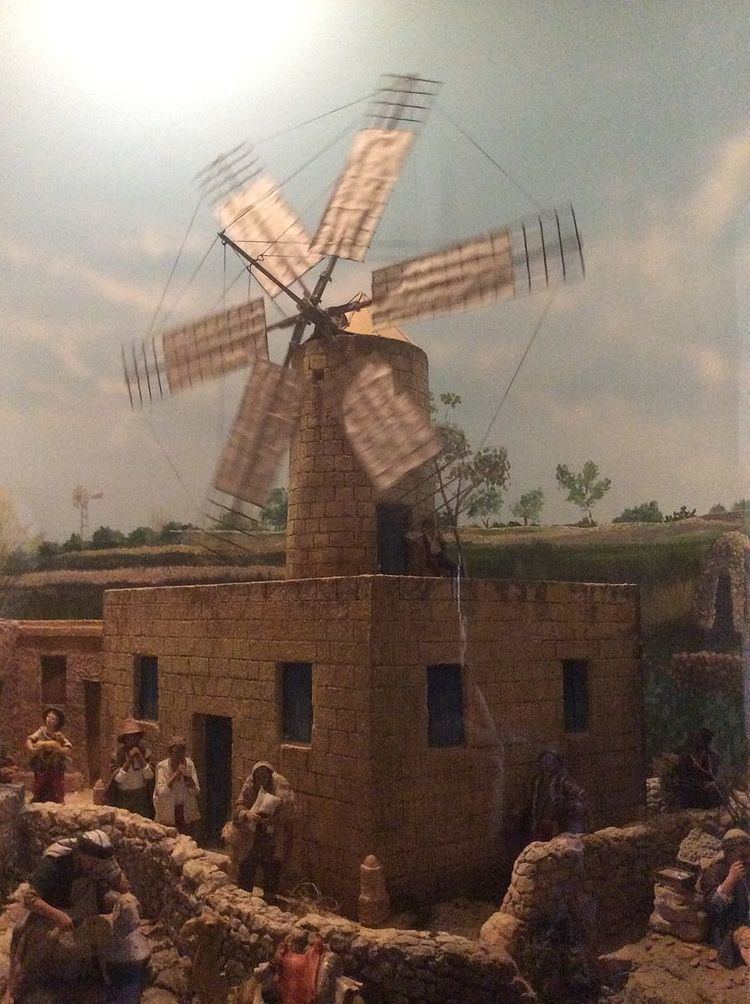Type Windmill Location Malta and Gozo | Architectural style Vernacular Named for Windmills | |
 | ||
Status Three functioning, most intact but non-functioing, some demolished or destroyed, some dismantled or partially dismantled Owner Government of Malta or Private property | ||
This is a list of windmills in Malta, that include those on Malta and Gozo. Most windmills (Maltese: imtieħen tar-riħ) in Malta were built during the Order of St. John, by the Cottoner and the Manoel Foundations. There are 48 windmills (apart from those demolished that would add up to at least 69) of which are all were included on the antiques list of 1932 and scheduled as cultural buildings by the Malta Environment and Planning Authority (MEPA). The windmills form an integral part of Maltese history. Those in the countryside were used exclusively for food production, such as wheat, barley or vines, while some of those within the fortified walled cities in Valletta and the Three Cities had a military use, for the production of gunpowder.
At the time of construction, each windmills' tower could site the next windmill from distance, similar to military watchtowers, in order to learn whether the others are working on that day. An instrument called bronja, colloquially known as tronga, is commonly associated with the functioning of windmills. The tronja is a sea snail that is modified, with a hole at one end, and when blown it creates a strong noise reaching a large distance in a given Maltese village. This was useful to inform the people that the windmills are operating that day due to being a windy day, by which the sails turn for general function.
The architecture of a windmill could differ from one to another, but in general a windmill had similar characteristics. A tower has a built circular staircase inside it that leads to the top. Rooms are built around the tower, giving both support to the tower and used for the general storage of production. A windmill could simultaneously be the family residence of the miller. Each tower has an approximate height of 15 meters and a radius of 1.5 meters. The first mills were built in the 16th-century, however these were post mills. The oldest windmills were built in the 17th-century on the island of Malta while the latest were built on Gozo in the 18th-century. The windmills were eventually replaced with the industrial development of steam mills, circa 1900, but namaged to keep competitive production throughout the mid-twentieth century.
In comparison to the rest of the world, including The Netherlands that is more noticed for them, Malta has the most number of windmills on its land. There are approximately a windmill for each 9 kilometers. At one point there were possibly the double of the present amount, but many were demolished. Despite the survival of the several windmills only three of them are still at functional status, visibly with their sails in place. Other more traditional mills in Malta include those that made use of animals, such as horses and donkeys, to turn the mill. A functioning Maltese windmill has six sails.
